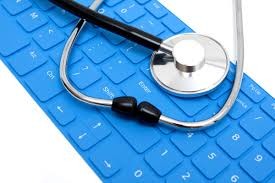Future Dental Education: Technology
Education is one of the fields that greatly profited from technology, in teaching and learning sides, and using technology in dental education allowed for innovative teaching methods and more student engagement. The digital native students have the necessary skills to interact with advanced technologies used in the modern educational process.
Using technology in dental schools is incorporated in classrooms, as well as in clinical, preclinical and institutional educational sessions. The Commission on Dental Accreditation recommended the application of technology in dental education programs to improve patient care and to revolutionize all aspects of the curriculum, from didactic courses to clinical instruction; and one national survey (2003) revealed that using IT science at U.S. dental schools reported some uncertainty about the level of integrating new technologies in all capacities of academic environment.

A consensus paper was written by international experts in dental education highlighted that technology could assist in learning and acquiring clinical skills (2008). Still no clear answers exist to “a series of myths that exist about the use of technology in education” and how to create a framework for available technology helping patient care.
Didactic, preclinical and clinical settings need different teaching/learning devices including laptops and tablets as well as exam software, simulcasting, haptic technology, 3D printing, digital treatment planning and lasers across all disciplines. Electronic health records (EHRs) and telehealth have major role in dentistry and now are being integrated successfully in the dental curriculum.
Classroom learning can be more focused on podcasts and webinars, curriculum mapping software, digital assessment methods, interactive e‐learning, and social media as motivation tool. Nevertheless, gaming, cloud LMS, flipped classroom and online learning with embedded quizzes are the most likely learning tools in the future. In addition, for preclinical education, the most highlighted learning strategies are augmented reality, virtual reality, Japanese robot patient simulator, integrated TEL system, hyperlinked 2D/3D, 3D printing and e‐portfolio.
The applications of telehealth are seen to be must in future dental educational curriculum. The applications differ from professionals to students and include a variety of techniques. The aim of integrating telehealth in dental education is to assess behavioral approaches and skills. Telehealth data can be used for decision support, follow‐up care, second opinion, and team teaching. Telehealth allows for sharing interdisciplinary experience and patient monitoring. Using telehealth can help in sharing videos of treatment or surgery and to get feedback from students.
Moreover, dental students in the US and worldwide strive for integrating topics like artificial intelligence 3D printing, CBCT, genetic sequencing, personalized medicine, big data for decision support, e‐assisted surgical tools, community‐based education, CAD/CAM and voice‐operated EHRs in their future dental career.
(https://onlinelibrary.wiley.com/doi/full/10.1111/eje.12342)

